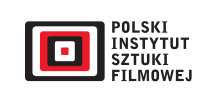
Original title: Illyricvm
Genre: Historical drama
Director: Simon Bogojevic-Narath
Country: Croatia, Slovenia, Italy, Kosovo, Bosnia and Hercegovina
Year of production: 2022
Czas: 95 min
Awards and nominations:
2022 Pula Film Festival: Golden Arena: Best Make-Up
2022 Črček Bahia Independent Film Festival: Best Film
It’s 37 BC. The Romans keep extending their sphere of influence. Wandering across Illyria, they collect taxes and conquer local tribes. Volsus (played by Filip Krizan), a young man who knows about loss, is taken by a Roman unit. He’s supposed to help with a seemingly simple task of collecting finances for the Roman emperor. However, meeting local residents leads to an unexpected turn of events. Not everyone wants to submit to the new order without a fight. Volsus is a keen observer of reality, torn between two worlds of the barbarians and the Romans. The archaic and emotional everyday life of the tribes with their quaint and brutal laws and traditions isn’t that different from the world of the Romans regarded as better.
Simon Bogojevic-Narath takes viewers on a journey into the past discovering absorbing ancient history where the clash between tradition and progress leads to sad conclusions. The director focuses on differences and similarities between us and the tribes occupying the Balkan Peninsula before the rise of Christianity. He points out social mechanisms clashing with poverty, occupation, exploitation, and intolerance. “Illyricvm” is a unique occasion to see the world that no longer exists with its armour, clothes, and culture, and hear languages that are no longer spoken: the Latin and the Illyrian.
Author: Małgorzata Czop
* * *
Simon Bogojevic-Narath – a Croatian director who graduated from the Academy of Fine Arts in Zagreb. He participated in numerous artistic and commercial projects, like TV programmes, music videos, commercials, theatrical plays, and short and feature films, for which he won many local and international awards. “Illyricvm” is the result of his long-time interest in history, archaeology, genetics, and anthropology.





Projekt sfinansowany przez
